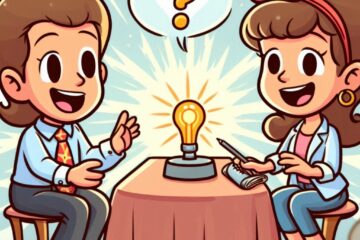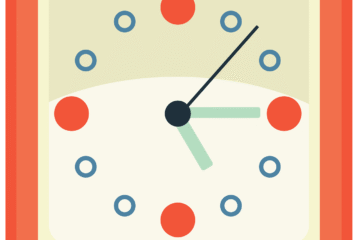Let’s continue our discussion of the variety of ways we can reach out to connect with our departed loved ones on the Other Side.
Yeah, I’ve thought ‘bout what you said last time. Uh, that was a lot, but I think I’m ready for more.
Okay, let’s get to it. When we started all this, I referenced a book by scientist Julie Beischel, PhD … “Love and the Afterlife” … which I’m using as a guide for our discussion.
It not only lays out the scientific evidence for our loved ones surviving bodily death, but describes many ways we can engage in after-death communication to actually maintain these relationships.
Still gettin’ my head ‘round that idea, but yeah, she talks ‘bout 4 types of this communicatin’ after they’re dead.
Right … Spontaneous, Facilitated, Assisted, and Requested after-death communication (ADC).
So far, we’ve explored the first one … Spontaneous ADCs … the various ways our loved ones will reach out to us on their own, either making their presence known or sending us signs.
Let’s switch gears and move to the second type, which is quite different in nature.
TYPE 2 – “Facilitated” ADCs
Beischel defines Facilitated ADCs as those happening under the direction of a trained facilitator. From what I can tell, these seem to be targeted more specifically at easing intense suffering brought on by grief, as opposed to simply checking in with a loved one.
She says these facilitated processes involve specific, well-developed and studied protocols, designed to help a person have an ADC experience.
She points to two major examples … psychomanteum-induced experiences and EMDR-induced experiences.
Psychomanteum-Induced ADC
Uh, syko-what??
Right, lots of syllables. In brief, Psychomanteum-induced ADC is based on a process where, guided by a trained facilitator, you use a mirror in a darkened space to induce communication with your loved one.
Um, sounds … odd.
I admit it kind of does, but I was intrigued to learn this process was developed by the highly respected pioneer of research into near-death experiences … Raymond Moody, MD. (I’ve posted about his iconic book … “Life After Life.”)
In Beischel’s book, she goes into this process, its history, and the results achieved … even including connections made with departed companion animals.
You mean, I could, like, be with Fido again … ?
Apparently that’s a possibility. So, you know, you may want to check into this further, especially if you’re feeling you could use help managing your loss.
Hmm, maybe ….
EMDR-Induced ADC
The other example Beischel discusses is based on EMDR … Eye Movement Desensitization and Reprocessing. This is a standard technique that is used by many therapists for a variety of situations.
It has to do with the therapist “rhythmically stimulating both sides of the body to induce a specific state of consciousness” …
Blah, blah, blah …
I know, it gets kind of technical. Beischel does a good job of describing more about it, but it’s even better to be able to see it in action as part of a specific therapy, such as this one …
Induced After-Death Communication (IADC)
This EMDR therapy … Induced After-Death Communication (IADC) … is one Beischel specifically mentions, and though I have no personal experience with it, I have come across an opportunity to observe it.
As I understand it, contrary to its name, it doesn’t actually induce after-death communication. Rather, it’s a process that helps clients to achieve a state of mind that increases the chances they’ll have one.
Apparently, when an ADC does happen, most clients view the experience as real, meaning they come away feeling they’ve actually communicated with their deceased loved one.
But, you know, not everyone is open to the idea that communicating with the deceased is even possible.
Duh ….
Yeah, I know. However, get this … even if they don’t believe it could actually happen, when they undergo this therapy, the healing benefits are still achieved.
Oh, that’s … unexpected. Where did you come across this, uh, ABCD therapy?
It’s called “IADC,” and it was featured in an interesting documentary called Life With Ghosts (available here).
“Life With Ghosts” documentary
What?? Life with … GHOSTS? Jeez, that sounds scary.
Yeah, the title is a bit … controversial. On top of it, the documentary was originally called Living With Ghosts, so don’t be confused if you see that reference. However, it’s nothing like what you might be imagining and is actually quite fascinating.
The film’s press kit describes its premise this way … “A severely grief-stricken widow agrees to participate in a highly unorthodox study whereby scientists facilitate telepathic “reconnections” between survivor and deceased — the first publicly-funded research of its kind.”
In other words, it shows IADC being used in a real-life, real-time situation … and this means that, as the audience, we’re able to witness first-hand the impact it had.
I have to say, the healing results were remarkable. And as I understand it, many other IADC clients are finding similar improvement.
Wow, that’s cool. Okay, so what I wanna know is can I do these ADC things on my own?
Hmm, no. What’s key about the Facilitated type of after-death communication is these are processes that have been thoroughly developed and studied, and you have to be professionally certified to carry them out. You can’t just do them yourself.
Dr. Beischel spends more time describing these in her book, and there are practitioners you could reach out to if you wanted to pursue it. In fact, here’s a directory of trained IADC therapists.
Oh, okay.
But there’s more
But let me add a note here. Although these are the two examples Beischel promotes, this isn’t a complete list of ADC options that are offered by a trained facilitator. It’s just that other options may not fit Beischel’s strict criteria for this type of ADC … scientist, remember?
In fact, I recently listened to an interview with a clinician who uses sound to bring about the state of awareness required to have an after-death communication. She too recommends having an experienced practitioner lead the process.
Using sound in this way … drumming, for example … is an idea I’ve encountered often, though never tried. I’m not sure to what extent “specific protocols” have been developed for it, but the point is this … other guided options do exist, and you may come across them if you’re looking.
Good to know. Whew, all this is even MORE to think ‘bout ….
Indeed it is. So this is a good place to stop, having finished our review of the second type of after-death communication according to Beischel … Facilitated ADCs.
When we come together next time, we’ll tackle the third on her list … Assisted ADCs.
Let’s Share
Do you have experience with any sort of facilitated after-death communication therapies or processes, including using sound? Please post observations or suggestions in the Comments below.
To sign up for notifications of future posts, click here.


2 Comments
Anne · April 6, 2024 at 6:48 AM
Where can you watch the documentary “Living with Ghosts”?
Thanks!
Anne
spiritwright · April 6, 2024 at 8:33 AM
Here’s a link to the documentary website where, for now, it can be accessed for a fee: http://www.lifewithghosts.com. The film’s producers are working toward having it aired on PBS, but apparently that requires funding, so they’re using these proceeds to do so.
(P.S. Thanks for asking. I realize their website is a bit difficult to navigate so I’ve now added this link to my post.)